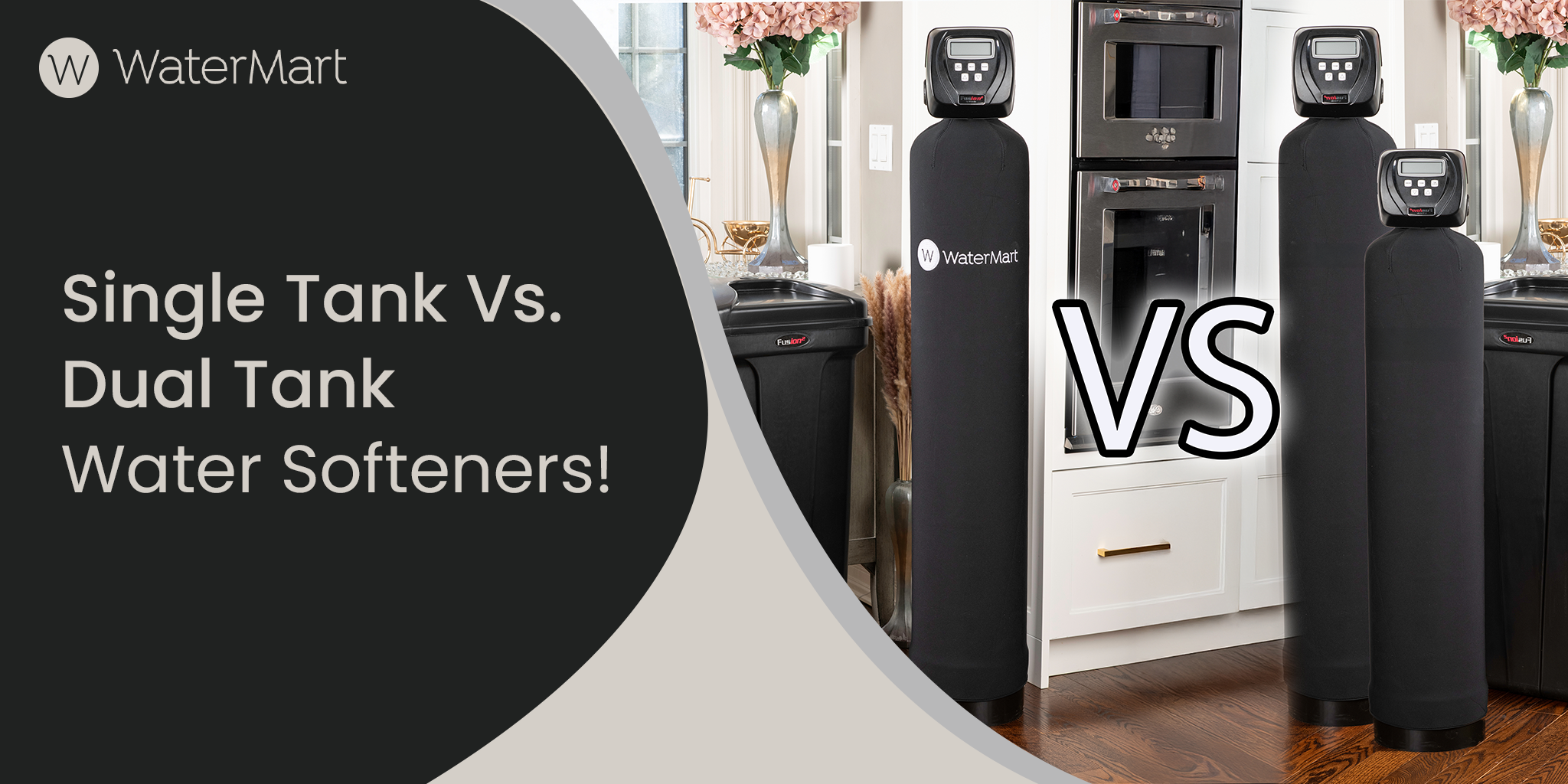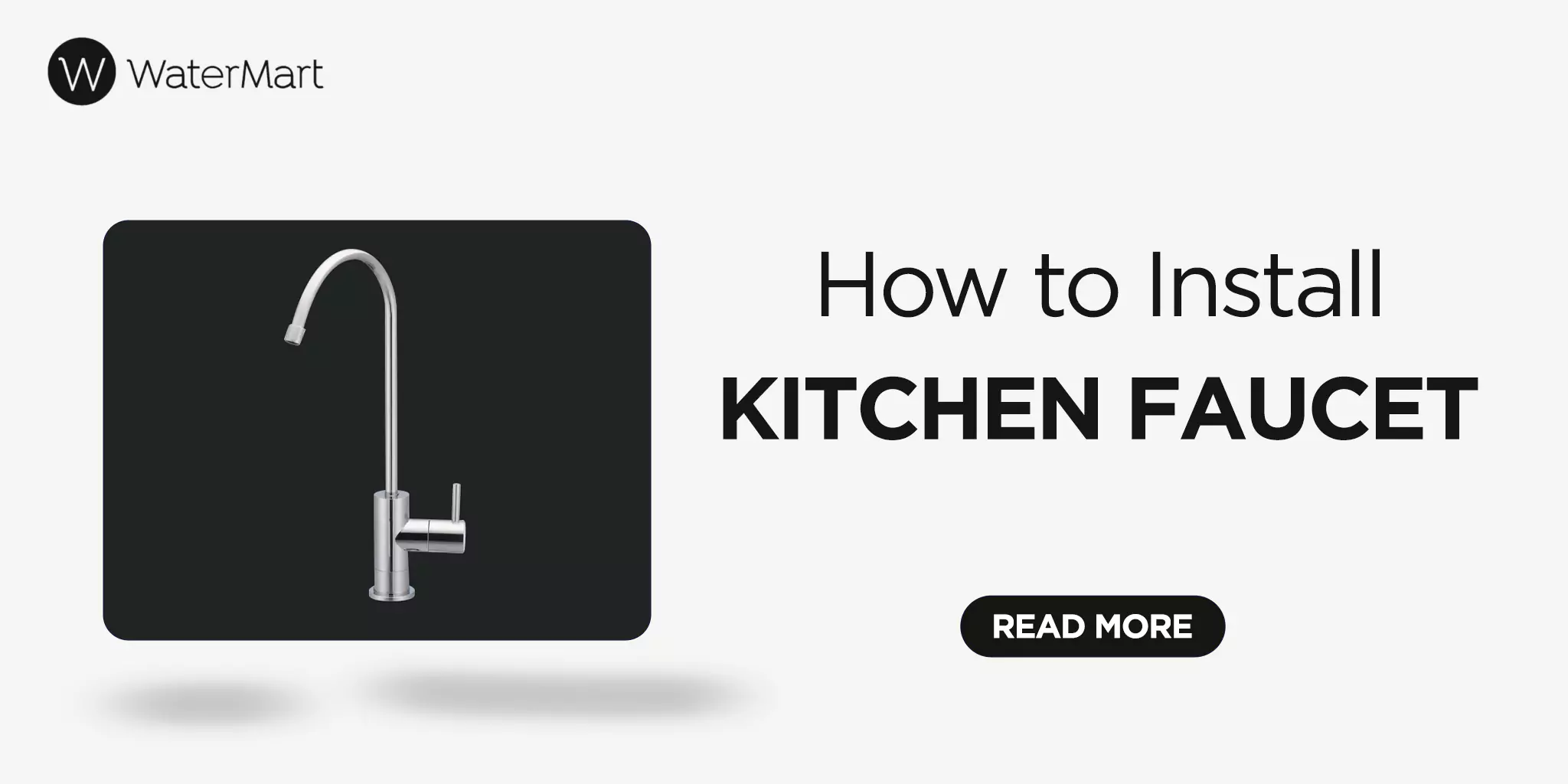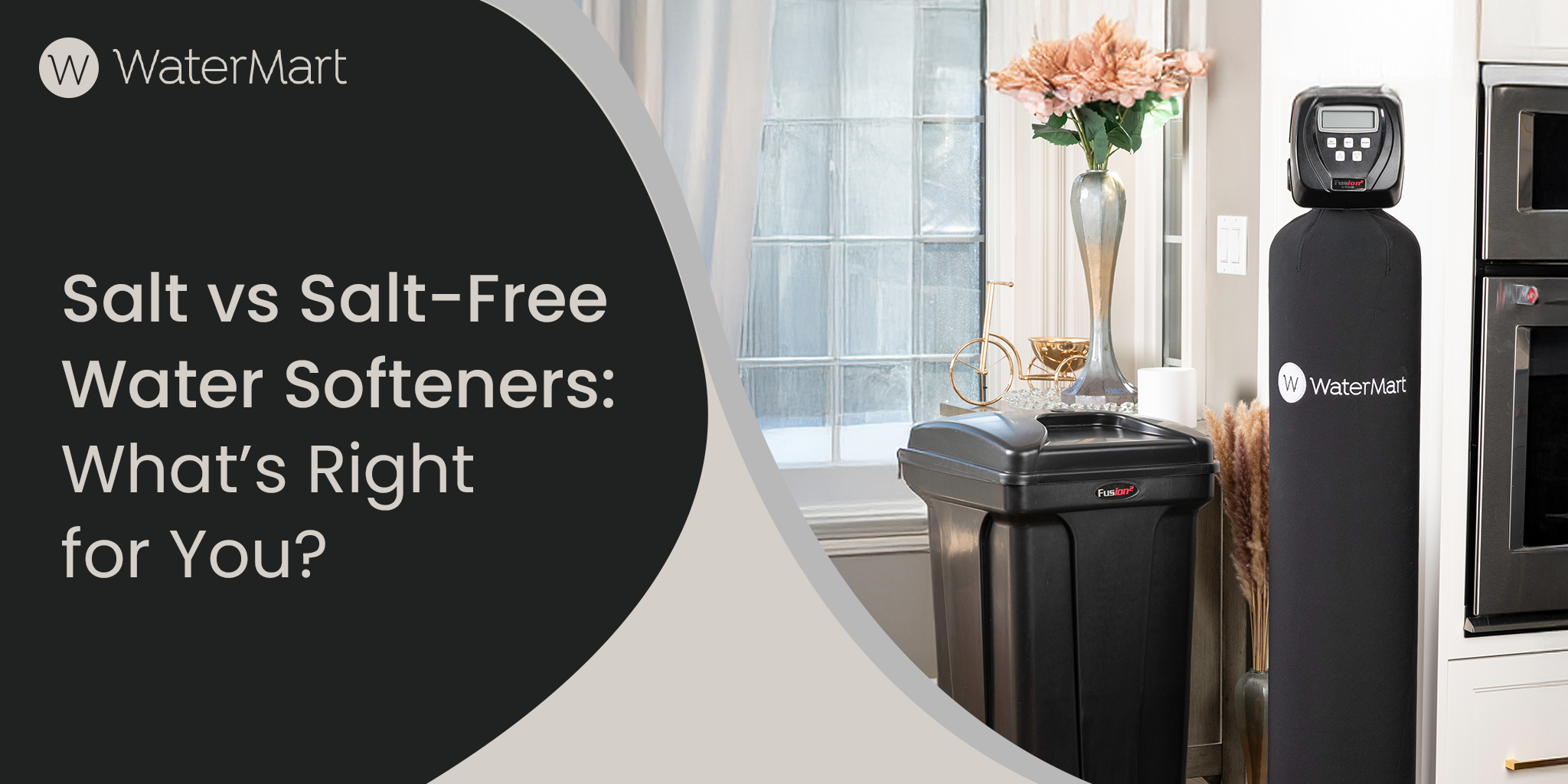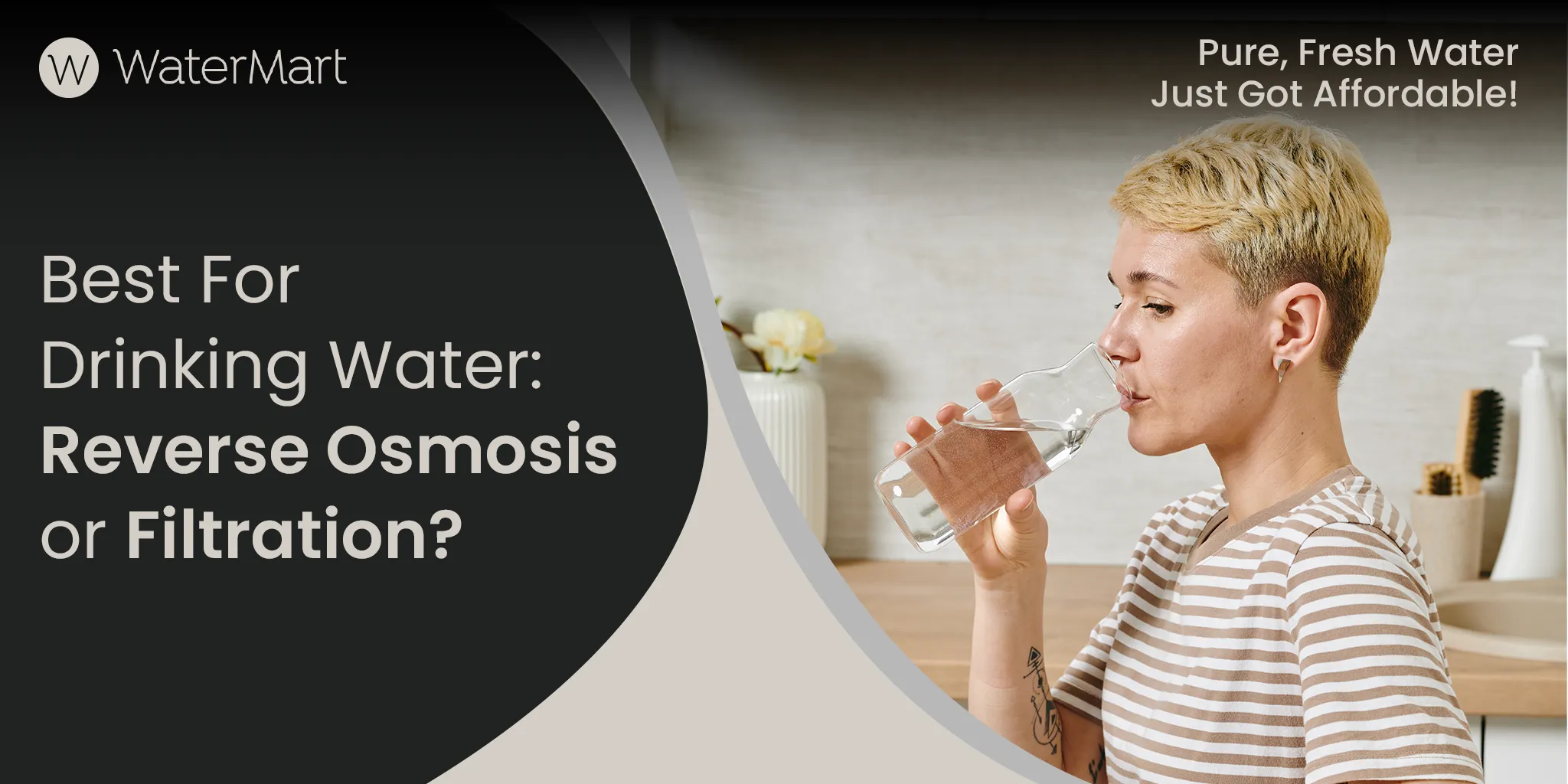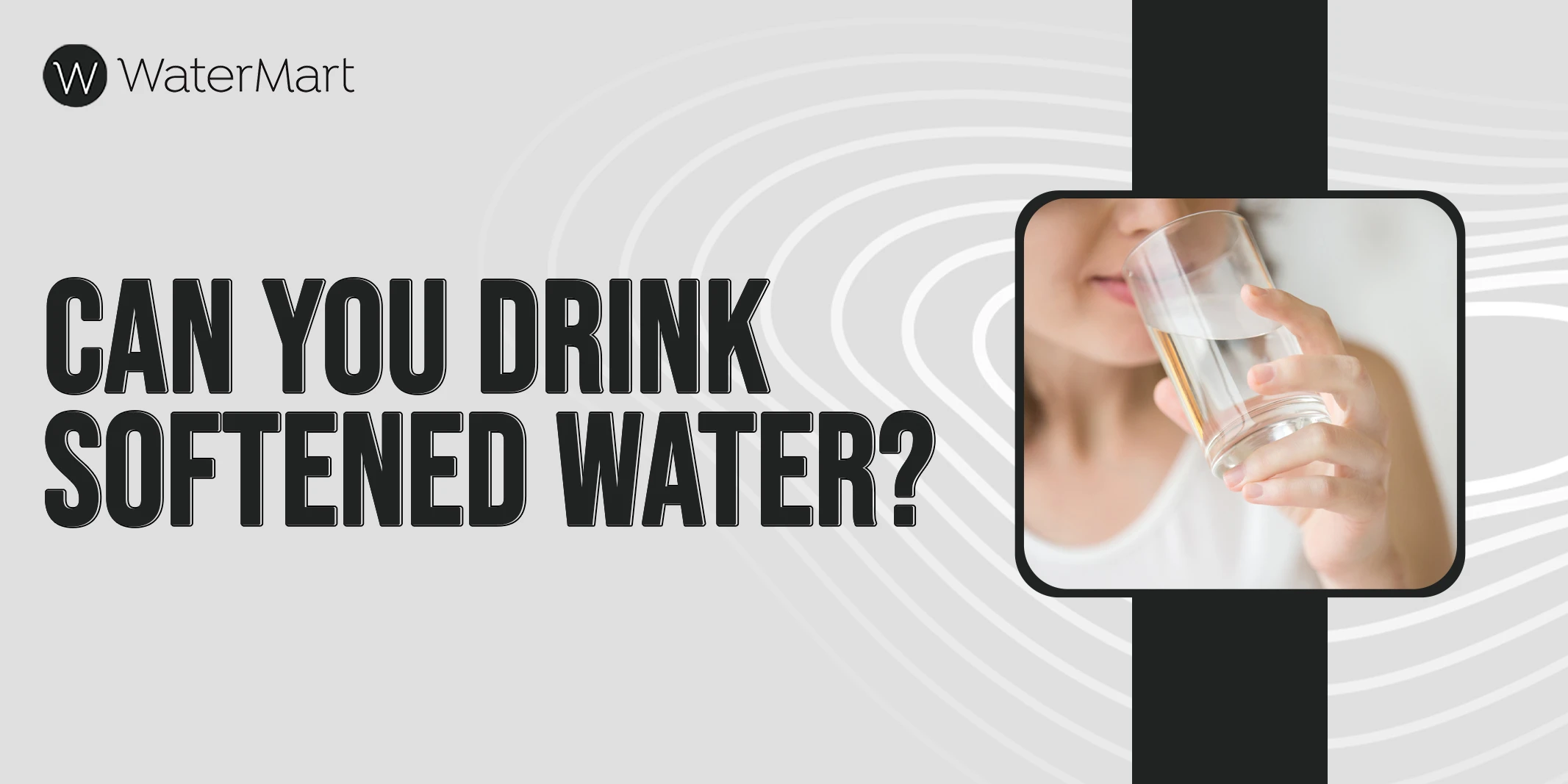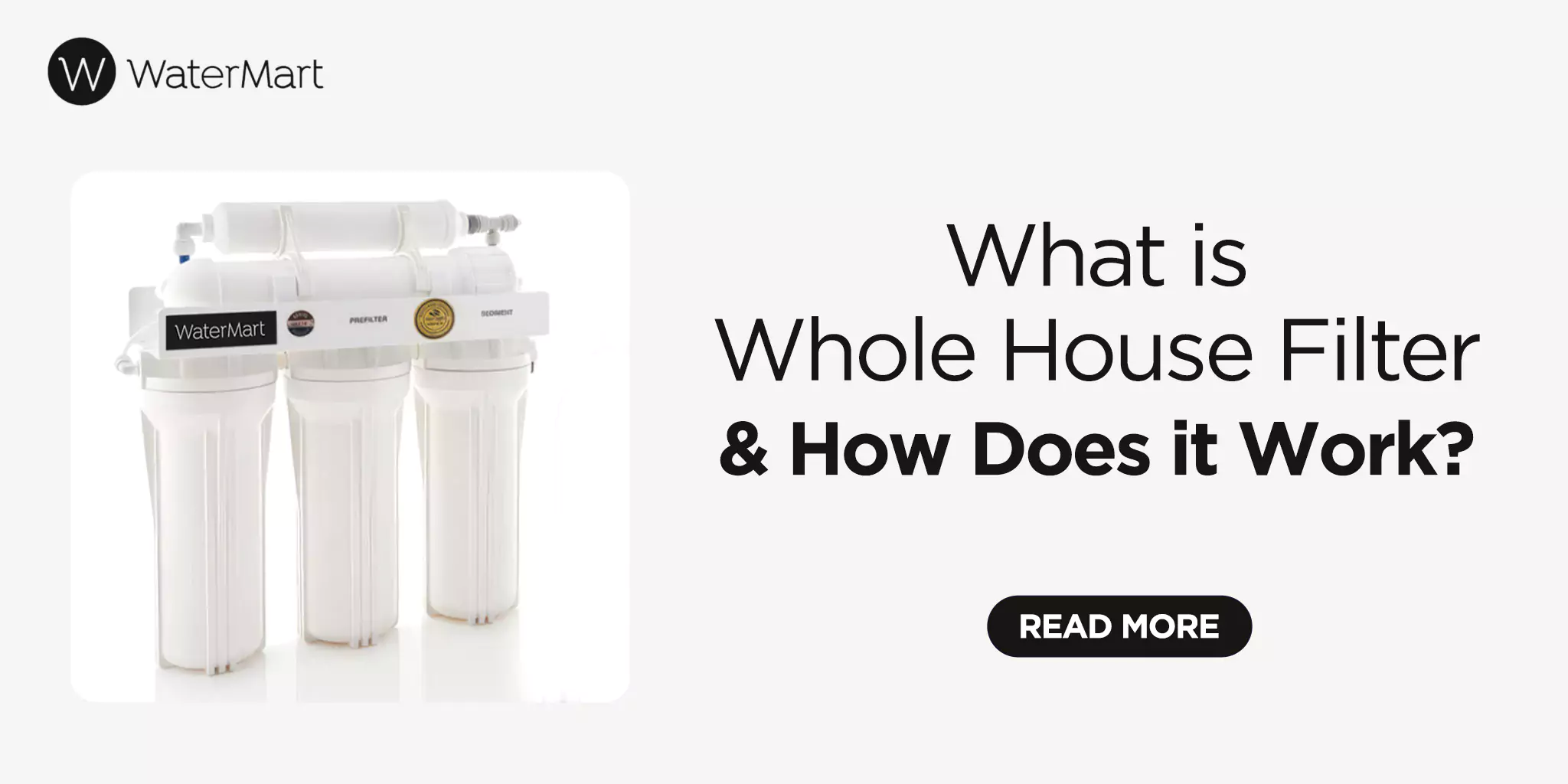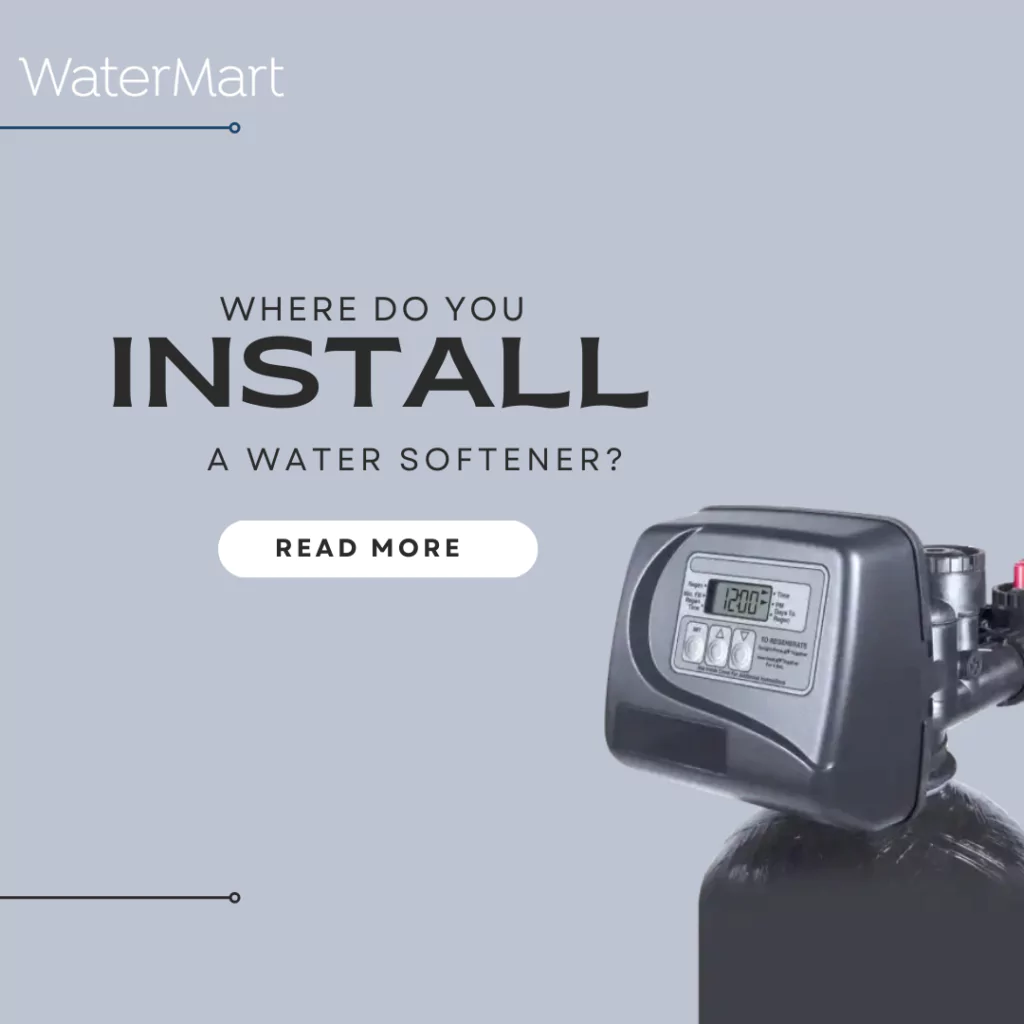Your cart is currently empty!
Single Tank Vs. Dual Tank Water Softeners: Space, Cost, and Efficiency Compared!
Due to hard water levels, most homes in Canadian cities require a water softener to prolong the life of appliances and protect plumbing. But when choosing the right system, many of our clients are confused about whether to pick a single-tank water softener or a dual-tank water softener (also called a twin-tank water softener).
At WaterMart, we install single-tank water softeners in mid-sized homes with predictable water use, while dual-tank systems are better for large families or homes with high water demand.
In this guide, we compare single-tank vs. dual-tank water softeners to help homeowners choose the right system for their water usage, space, and budget. Start by checking out this quick table to make fast decisions!
| Feature | Single Tank Water Softener | Dual Tank Water Softener System |
|---|---|---|
| Soft water availability | Temporary downtime during regeneration | Continuous supply |
| Best suited for | Small to medium households with moderate water usage | Large households, commercial settings, or variable usage homes needing 24/7 soft water |
| System cost | Lower upfront cost | Higher initial cost |
| Efficiency under high demand | Limited capacity during peak usage | Highly efficient |
| Space requirements | Compact design | Requires more room to fit two resin tanks and a brine tank |
| Installation complexity | Easier to install, fewer components | Slightly more complex setup, needs expert installation |
| Maintenance needs | Lower maintenance | More maintenance due to more parts |
| Water pressure consistency | Pressure can drop during the regeneration cycle | Maintains consistent water pressure even during regeneration |
What Is A Single Tank Water Softener, & How Does It Work?
A single-tank water softener uses one resin tank and one brine tank to treat hard water. It’s the most common setup in Canadian homes because it’s space-saving, lower in upfront cost, and gets the job done for households with steady water use.
In this, hard water is made to go through the resin, which is packed with beads that exchange calcium and magnesium for sodium through ion exchange. The brine tank holds a salt solution used to clean these beads during the regeneration process.
Most single-tank units use a meter or timer to track water usage and automatically start the cleaning process when needed. But since there’s only one tank, soft water is temporarily unavailable while it regenerates (we’ll cover that next).
It’s for any residential place where water usage is predictable and downtime won’t cause issues with plumbing, appliances, or daily use. Practically, the best small to mid-sized homes, condos, and cottages.
Remember! Even though there are two tanks in a single-tank water softener, only one handles the water softening; that’s why it’s called a single-tank system.
When Does Regeneration Occur in Single-Tank Water Softeners?
Single-tank softeners regenerate in one of two ways:
- Timer-based systems use a set schedule, often at night, regardless of actual water usage.
- Meter-based systems track gallons used and regenerate when needed.
The reason we tell our clients this is that during the cycle, the system goes offline. The downtime means you’ll get hard water until regeneration is complete. This can lead to:
- Wasted salt and water if the resin isn’t fully used.
- Temporary loss of soft water if demand exceeds capacity before scheduled regeneration.
This interruption can be inconvenient, especially in homes with high daily water usage. WaterMart’s water softeners use timers that include extra capacity to reduce the risk of running out of soft water, but it doesn’t eliminate the issue. If regeneration happens too early, it wastes salt and water. If it’s delayed, your home will receive hard water until the cycle completes.
Pros and Cons of Single-Tank Water Softeners
Single-tank water softeners are a solid fit for steady water usage, but they’re not for everyone. Here’s a quick look at what works and what doesn’t.
Pros
- Budget-Friendly Start: Single-tank systems cost less than dual‑tank units, so it’s ideal for small households.
- Space-Saving Design: It’s designed as a compact water softener, so there’s no need to sacrifice floor space like for full-size plumbing setups
- Simple Installation: These systems are easier and cheaper to install for most homes as they have fewer parts.
- Low‑effort Maintenance: It’s easy to maintain and requires basic upkeep, like salt refills and occasional cleanings. (no valves, pumps, or dual‑tank switching to service)
Cons
- Hard Water During Regeneration: You won’t get softened water when the system regenerates (typically 1-2 hours), which can happen during shower or laundry times.
- Pressure Drop In Regeneration Cycle: There’s a mild pressure loss if appliances run while the system regenerates.
- Not Ideal For Busy Homes: For larger families, high water usage can cause the system to temporarily run out of soft water between cycles.
What Is a Dual Tank Water Softener?
A dual-tank water softener comes with two resin tanks paired with a single brine or salt tank. The design takes up more space but ensures continuous soft water. When one resin tank reaches its capacity, the system instantly switches to the second tank, eliminating any downtime. There’s no timer-based regeneration as in this system; it’s metered. A control valve initiates cleaning based on actual water usage, not a timer.
Each tank undergoes ion exchange, removing calcium and magnesium by exchanging them for sodium ions, so soft water remains available at all times.
Due to continuous supply, this system is ideal for homes and businesses with high or variable demand:
- Large families where multiple showers, laundry, and dishes run simultaneously
- Properties in areas with extremely hard water
- Small commercial settings, like salons, B&Bs, or rental properties
- Homes that prefer a non-electric, metered option for energy savings
Pros and Cons of Dual-Tank Water Softeners
Dual‑tank setups are the best for busy homes. Although a continuous soft water supply might seem perfect, it’s not a fit for every situation. Here’s a clear breakdown:
Pros
- 24/7 Soft Water Supply: There’s no downtime needed for regeneration, so there are no interruptions or hard water.
- No Pressure Dips During Regeneration: Water pressure stays consistent, even if multiple appliances and taps are being used.
- Saves Salt And Water: Regenerates only when needed. That means less waste and up to 30% savings on salt and water compared to older timer-based softeners.
- Managing High Or Fluctuating Demand: It prevents soft water gaps, making it ideal for homes with varying water usage.
Cons
- Higher Initial Cost: The upfront price is significantly higher than basic single-tank softeners, as it includes more advanced controls.
- Requires More Space: With a twin-tank layout and separate brine tank, setting them up takes up more room. It’s best installed in larger basements or dedicated utility areas.
- More Involved Installation: Never DIY it! A professional setup is required, and it takes longer than installing standard units, increasing the initial installation bill.
- More Maintenance Over Time: More moving parts mean more things that can wear or clog. While rare, issues involve servicing both tanks or valve systems; plan for regular annual checkups.
Which Is Better: A Single-Tank Or Dual-Tank Water Softener?
Always think about your household’s daily demands as well as available space before picking a water filtering system. In our experience, here’ what works best for who:
- Single-tank softeners remain the popular entry point for homeowners. Their lower upfront cost and compact size make them top picks for people needing an average limit and steady soft water.
- Dual-tank systems are a smart investment for those needing a continuous supply of soft water. Ideal picks for high water usage or commercial use, demanding consistent pressure.
Ready to find out what’s best for your specific scenario? Start with a water test; it’s the only way to know your hardness levels and size your system correctly.
At WaterMart, we offer both options tailored to Canadian homes, along with expert in-home testing, system installation, and support across your zip code and state. Visit our Water Softening Systems page to explore your options and contact us to schedule your test today.
Conclusion
The final recommendation is to invest in a dual-tank for continuous peace of mind and choose a single-tank for economical performance without sacrificing quality. It all comes down to your home’s size, water habits, and space. Both of these systems give results by improving plumbing fixtures, appliance performance, skin, and hair health. Whichever route you take, start with a WaterMart in‑home test to determine hardness and get the right system. Schedule a free consultation today.
FAQs
Yes, if it’s properly sized (usually around 32-40k grain capacity). It typically regenerates every 7-10 days, keeping soft water flowing
Dual‑tank systems waste less salt and water thanks to smart, on‑demand regeneration, saving roughly 15-30% compared to standard single‑tank models.
Yes. Many homeowners begin with a single unit and upgrade later when demand or budget allows. Plumbing compatibility often makes it a clean transition.
Expect about double the footprint, around a 45 × 15-inch area plus space for the brine tank. It suits basements or larger utility rooms.
For homes needing soft water 24/7, they’re worth the investment. They offer steady pressure, longer resin life, and lower maintenance over time.
No. With on‑demand regeneration, dual‑tank systems only regenerate when needed, meaning they typically use less salt and water than single‑tank units with fixed schedules.
